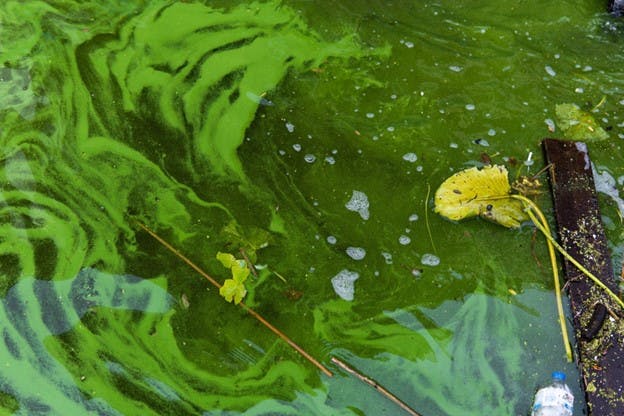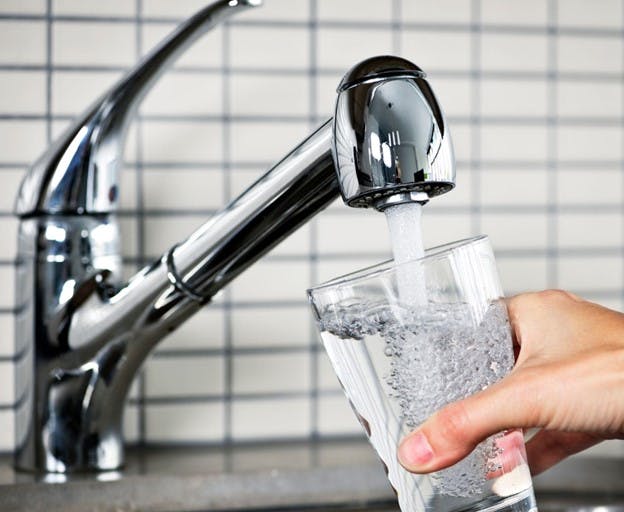December 2023
The Growing Concern of Harmful Algal Blooms in Our Ecosystems
Our beaches, lakes, and other watersheds are essential ecosystems filled with life, from fish and birds to plants and aquatic mammals. Their significance goes beyond providing natural habitats. For humans, these waters supply nourishment, fresh drinking water, recreation, and important economic opportunities.
However, when these ecosystems face challenges or become imbalanced, the consequences can be harmful for all. Such imbalances can manifest in various ways, from declining fish populations to changes in water clarity and quality.
One of the pressing threats to these aquatic environments is the emergence of harmful algal blooms, or HABs. These outbreaks not only disrupt the natural balance but also pose direct risks to human health and economic stability. And they're happening far more often than ever before.
In this article, we'll dive into the details of HABs, exploring their causes and impacts. We'll also talk about their effects on your health and drinking water and tell you how you can protect yourself in your home.
What Are Harmful Algal Blooms (HABs)?
Harmful algal blooms are dense populations or "blooms" of algae that negatively impact marine waters and freshwater systems. While harmful algae blooms are a natural occurrence, recent warmer water temperatures and excess nutrients from fertilizer runoff and human activities have increased the instances and severity of HAB events.
Not all algal species cause harmful algal blooms, though. In fact, many types of algae are vital to the health of aquatic ecosystems. Species of algae can range from small single-cell organisms like phytoplankton to larger species of seaweed. Algae is important for providing food, oxygen, and cover for insects, fish, and other waterborne creatures.
That being said, some HAB species can have devastating effects on human health, aquatic environments, and even the economy. And they can last anywhere from days to years. While states around the Great Lakes like Indiana and Ohio and coastal states like California, Texas, and Florida get the worst of it, no areas are completely immune.
What Are the Effects of Harmful Algal Blooms?
Algae is essential to aquatic ecosystems, forming the base of the food web in both freshwater and saltwater bodies. However, when these normally beneficial organisms multiply uncontrollably, these blooms can have serious consequences. Some produce toxins that can harm or kill fish, wildlife, and even humans.
Some blooms that don't produce toxins still endanger water bodies and fisheries by taking up all the oxygen and creating dead zones where nothing else can survive. They may also block sunlight from reaching other organisms, clog the gills of fish, overshadow corals and aquatic plants, or degrade water quality.
Let’s look at different types of algae and their harmful effects.
Cyanobacteria (Blue-Green Algae)
Frequently found in both freshwater and marine environments, cyanobacteria, or blue-green algae, pose a significant risk when they grow into harmful algal blooms. These blooms can release potent substances that act as liver toxins and neurotoxins (in both humans and animals) called cyanotoxins. Some of the most dangerous toxins associated with blue-green algae come from cyanobacteria called microcystins, of the genus microcystis.
When cyanobacteria blooms contaminate drinking water supplies, they can cause symptoms ranging from mild skin rashes to serious liver damage in humans, depending on the exposure level. Ingesting water contaminated with these toxins has also been linked to gastrointestinal symptoms and can be life threatening, in severe cases.
Dinoflagellates (Red Tide)
Dinoflagellates are often associated with red tides, a type of HAB that discolors water and can produce brevetoxins, tasteless and odorless neurotoxins. These red tide toxins can cause neurological issues such as tingling sensations and dizziness. In extreme cases, consuming shellfish contaminated with toxins caused by red tide can cause short-term memory loss, known as Amnesic Shellfish Poisoning.
While the public health hazards caused by these toxins are commonly considered to move through food chains, they can pose similar risks if they contaminate water supplies. Health advisories are also issued during red tides due to hazardous air quality. Wavebreaks can send high levels of brevetoxins airborne and cause severe reactions in those with respiratory issues.
Diatoms (Brown Tide)
Diatoms, a group of algae that can appear brown due to their unique pigments, occasionally form blooms that produce domoic acid. Like with red tide, this neurotoxin can cause serious neurological problems, including confusion, disorientation, and in serious cases, seizure and memory loss if consumed in contaminated water or shellfish.
While these usually don’t pose a threat to public drinking water supplies, if you use a private well that's close to an estuary, it's a good idea to test for these toxins after major storms or flooding.
Prymnesium Parvum (Golden Algae)
Golden algae thrives primarily in brackish or freshwater systems and produces toxins that devastate fish populations. The impact of these blooms is felt most by local fisheries, as they can destroy fish stocks and disrupt ecosystems.
While these toxins are generally not harmful to humans directly, golden algae can create challenges for water treatment plants. When golden algae blooms occur in reservoirs or lakes used as drinking water sources, they require additional purification processes to remove digestive irritants.
What Causes Harmful Algal Blooms to Occur?
While we know quite a bit about harmful algal blooms and their contributing factors, how they all work together to create HABs is still an area of important study. HABs can occur naturally but human activity is known to contribute to their formation in many ways. Here are some natural and human influenced factors we know of:
- Increased nutrient pollution from phosphorus and nitrogen fertilizers
- Changes in the food chain — such as shrinking numbers of algae-eating organisms — which can let growth get out of control
- Introduction of non-native species interrupting food chains
- Changes in water flow and circulation
- Climate change warming the waters
By using NASA satellite data and collecting water samples, the National Oceanic and Atmospheric Administration (NOAA) and the U.S. Environmental Protection Agency (EPA) study the effects of HABs to better understand them and to develop more reliable HAB forecast systems.
What Types of Water Bodies Are Susceptible to Harmful Algal Blooms?
Harmful algal blooms can happen in any large body of water. In the U.S., they're a major concern in coastal states like California, Florida, and Texas. They're also common around the Great Lakes in states like Ohio, which relies heavily on Lake Erie.
HABs have resulted in the country's largest dead zones in the northern Gulf of Mexico, where the Mississippi River empties vast amounts of chemical fertilizers. In 2013, the dead zone was estimated to span 5,840 square miles by the EPA.
It’s not just large beaches and coasts, though. Freshwater lakes, rivers, and other watersheds we rely on for commerce, recreation, and drinking water are affected by high levels of harmful algae.
In fact, many residents in U.S. and Canadian cities. like NYC, Houston, and Montreal have noticed an off-putting, swampy taste in their tap water. This is caused by a byproduct of local blue-green algae blooms, which release geosmin and methylisoborneol into source water. While these aren’t considered harmful, they are unpleasant and very challenging to remove from water.
How Do Harmful Algal Blooms Affect Human Health?
While instances of severe health issues linked to harmful algal blooms are uncommon, HAB toxins still pose health risks. Contact with bacteria produced by HABs might cause allergic responses such as skin rashes, eye irritation, or respiratory symptoms. In rarer instances, more serious effects like gastroenteritis, liver and kidney damage, and even death can occur.
Recreational activities in affected waters present the highest risk for human exposure, typically through accidental swallowing or inhalation. Among the various cyanotoxins, microcystin is particularly dangerous, acting as a strong liver toxin and a potential carcinogen. Additionally, these toxins have been known to be lethal to animals, including livestock and pets, and have been associated with fish and bird deaths in areas with persistent cyanobacteria blooms.
Can Harmful Algal Blooms Affect Pets and Other Animals?
Unfortunately, yes. Livestock and pets have been known to die from exposure to some HABs. Dogs are more vulnerable than humans, mainly due to behavior. A dog is more likely to eat or drink from a contaminated source or decide to take a swim where they shouldn’t.
Keep them away from water contaminated by algal blooms and make sure your pets get access to plenty of filtered, clean water so they’re less tempted to drink from a source that could hurt them.
Are There Specific Regions or Areas That Are More Prone to HABs?
Coastal regions like the Gulf of Mexico, the Gulf of Maine, the Pacific Northwest, Chesapeake Bay, the California and Northeast coasts, and the Great Lakes are particularly vulnerable to HAB events.
Due to differences in ecosystems, the type of algae present and severity may vary depending on the location. That means algal blooms in different areas can have very different health effects and economic impacts.
Can Harmful Algal Blooms Impact Drinking Water Supplies?
Harmful algal blooms are happening more often, and in more places, than ever. They're happening more frequently in both saltwater and freshwater habitats due to nutrient pollution and warmer temperatures. Many of us are even tasting the effects of HABs coming from our taps.
If you’re looking for a way to improve the taste and quality of your tap water, HomeWater can help. Our UPSTREAM™ 4-Stage Whole Home Water Filter uses catalytic carbon to remove pesticides, herbicides, THMs, chloramines, hydrogen sulfide, volatile organic compounds, PFOS/PFAS, heavy metals, turbidity, sediment, dirt, rust, and more.
You’ll rest easy knowing you have the best tasting water possible every time you turn on your tap.
Related Articles
December 2023
The Ultimate Guide to Water Filter Maintenance
September 2023



